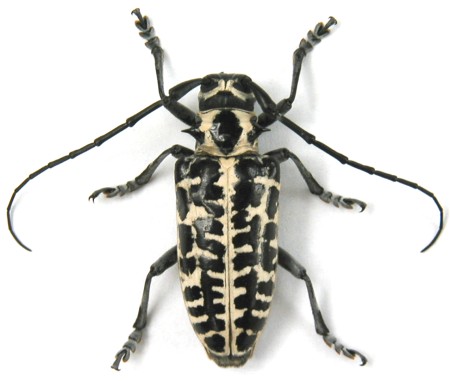Cottonwood Borer
 Scientific Name
Scientific Name
Plectrodera scalator
Hosts
The cottonwood borer breeds in the bases and roots of living cottonwood, poplars, and willows.
Symptoms
Adult feeding can do some damage, especially on young trees, but most of the damage is caused by the larvae. Young trees may be hollowed, partially severed, or girdled at or slightly below the root collar, causing breakage. Damage has been greatest in nurseries, young plantations, and young natural stands growing on sandy soils. Larvae are seldom numerous enough to cause major damage to older trees, although significant infestations may predispose the trees to other problems.
Life Cycle
Adults begin to emerge in late spring (late May or early June in Oklahoma) and feed on the tender shoots of young trees. Mating and egg-laying occur over an extended period during the summer. To oviposit, the female digs away the soil at the base of the tree, cuts a niche in the bark, and deposits one or more eggs. Upon hatching, the larvae mine downward in the Inner bark, penetrating into the wood at the approach of cold weather. The second winter the much larger larvae occupy large tunnels at the base of the tree. Pupation occurs within the gallery the second spring, the entire life cycle extending for a two-year period. The new adult chews through the pupal chamber and digs its way to the soil surface to escape.
Description
The adults are large, robust, longhorned beetles, 1 to 1 1/ 2 inches long. The basic body color is black, but this is obscured by patches and cross stripes of fine, pure white hairs that surround black, hairless areas. There is a strong spine on each side of the thorax and the antennae are as long as the body (females) or a little longer (males). The larvae are legless, elongate, moderately robust, and yellowish white. They reach a maximum length of about 1 1/2 inches.
Control
Please contact your local county extension office for current information.
